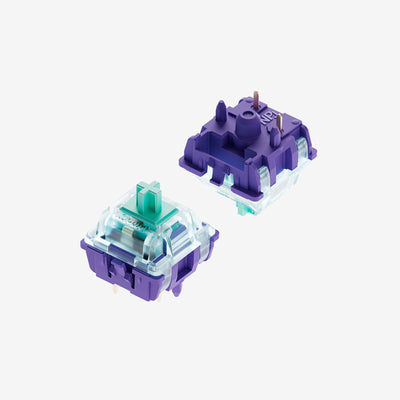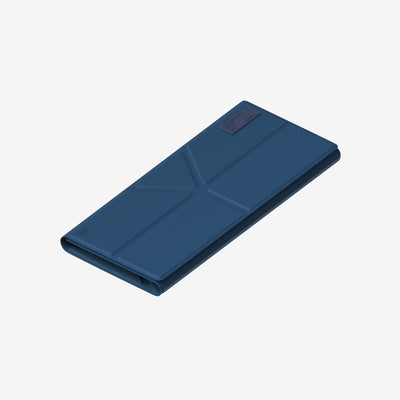Halo V2: Color from the inside out
Halo has always been in the spotlight, so most of you are probably pretty familiar with the rundown of its many features and firsts, from the Halolight to the Ghostbar, Halo is like a textbook case of what ‘Designed by NuPhy’ is like. Beyond what meets the eye however, nothing other than the profile is normal with the keyboard at the cutting edge of our assembled products, and the 20-months roller coaster to build it.
The Industrial and Structural Design
We are pretty used to the process of demand-driven innovation, in fact, the original Halo design started as a project of trying to synergize bands of light with a unibody aluminum frame. The design requirements for Halo V2, given its lack of form factor limitations, had always been quite forthright and consistent: better lights, better sound and better feel. For better lights we decided upon a semi-transparent bottom case, constructed with double-shot moulding, the entire surface of the case can serve as a expansion of the Halo band to transmit RGB lights. And for better sound and feel, the gasket mount style has to replace the top mount used in the first generation. A conflict, however, arises from the two requirement, testing the integrity of our 'zero compromise' motto.
The gasket mount style relies on silicone beans placed in front of the LED bulbs, and thereby blocking their lights. Leaving this un-addressed would contaminate the ‘Halo’ with ink-ish spots, all the more conspicuous when the light-emitting surface is so large. Now if we are to be honest, we did experiment with a bunch of ‘trade-off’ venues, such as reverting to a solid case, moving the keys further away from the edges, or the bulbs backward, etc. Invariably and predictably, a small concession in user experience would eventually lead to a total collapse, forcing us back to the drawing board.
Eventually, after months of trials and errors of different bulb numbers, types, layouts, and compositions of light diffusers, we drew close to a solution that is more akin to the homogenous light sources used in surgical operations rather than consumer electronics: by placing bulbs at different angles from the bean, lights will emit in all directions, and no ‘shadow’ or ‘inky spot’ will be visible. The solution requires 80 instead of the 69 bulbs in the blueprint, which also visibly enhance the brightness of the light bands. Additionally, the light bands are also widened, and crescent shaped apertured are drilled in their front portions to let out more lights. All the efforts and the secondary emitting surface that is the bottom case, have enabled a Halolight lightyears more stunning and awesome.
And sure enough, awesomeness is incomplete without accessibility. Halo75 V2’s built-in SignalRGB empowers you to create endless varieties of light effects utilizing its light hardwares, and even control other SignalRGB compatible devices.
‘Mere color choices’
Now with all its impressive light capabilities and effects, there better be some colorways that Halolight deserves to go with it. So what glows, deflects lights and still looks cool when the lights are off? An incidental examination of the wavy side burrows on the semi-transparent bottom cases had made us realize its resemblance with cocktail glasses. The layered nature of the elements of Halo’s appearance, the double shot keycaps, aluminum frame, bottom case, silicone…all seem to match up. It then took multiple party sessions and late nights at the bar before we nail the connection between colorful spirits and colorful lights-the three cocktail themes Sakura Fizz, Mojito and Blue Lagoon, each augmenting one primary RGB light color. The acrylic twotone rest, meanwhile, serves to spread the lights out and blend them into the environment, forming the outermost layer of Halo’s collective image.
The story goes on
What can we give to our normal-profile users? What qualities and features it should have that are not on thousands and thousands of other normal-profile keebs? And in the process of its development, how do we make sure our ‘no compromise’ slogan still rings true? We didn’t have ready answers when Halo was just two bands and a frame on paper, and we don’t have them now. All we have are enthusiasms and commitments, and all we know is despite common perceptions, innovation is not years where nothing happens, and days where years happen. Years(20 months in this case) of failures, studies, and learning from users never went in vain, in one form or another, they will find their ways into the final product. On Halo75 V2, we have the best Halo we ever know, but only so far. A better, more perfect one is always in the future.








